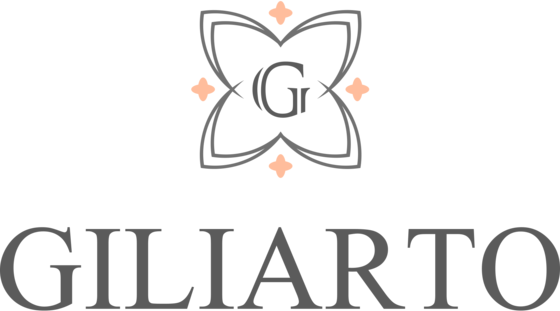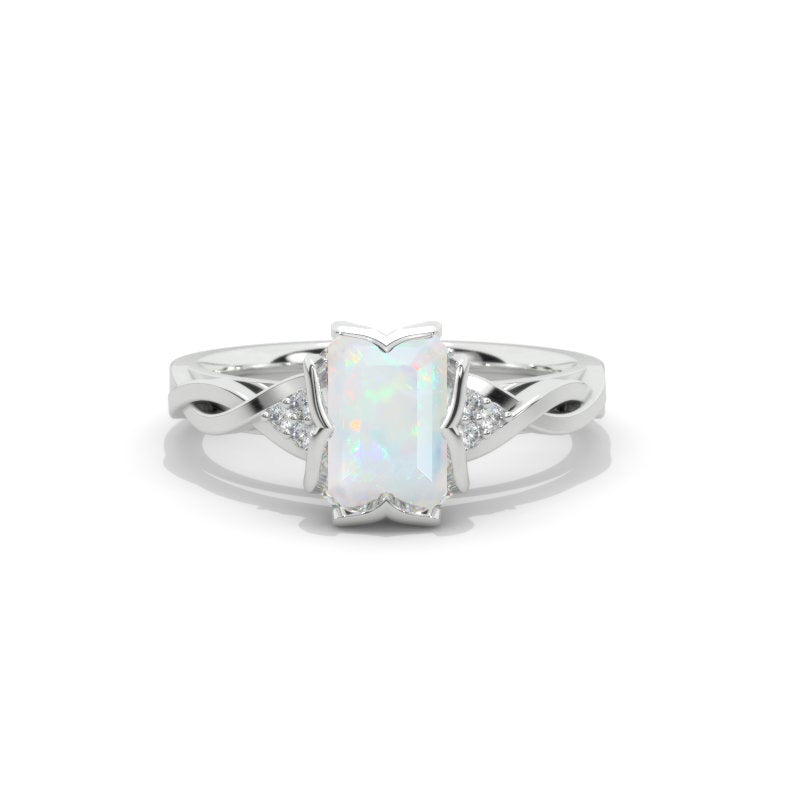Gold Plated Jewelry vs 10K, 14K, 18K Solid Gold: What's the Difference?

Walking into a jewelry store and seeing price tags that range from $50 to $5,000 for pieces that look nearly identical can be confusing. The secret isn't always about the design - it's about what's underneath. Gold plated, 10K, 14K, and 18K gold aren't just different price points. They're fundamentally different materials, and understanding the distinction helps you make smarter buying decisions.
What Is Gold Plated Jewelry?
Gold plated jewelry has a base metal (usually brass, copper, or sterling silver) covered with a thin layer of gold. Think of it like a gold-colored coating. The plating process involves electrically bonding gold onto the base metal, creating that signature shine.
The gold layer is measured in microns. Most gold plated jewelry has 0.5 to 2.5 microns of gold on the surface. To put that in perspective, a human hair is about 75 microns thick. We're talking incredibly thin.
How Long Does Gold Plated Jewelry Last?
With regular wear, expect the gold layer to start showing wear within 6 months to 2 years. High-contact areas like ring bands or bracelet clasps wear faster. Once the plating wears through, you'll see the base metal underneath -usually a different color entirely.
Factors that speed up wear:
- Daily showers or swimming
- Contact with lotions, perfumes, and cleaning products
- Frequent hand washing
- Body chemistry (some people's skin wears through plating faster)
The Upside of Gold Plated
Price: This is where plated jewelry shines. You get the gold look without the gold investment.
Trendy pieces: Perfect for fashion jewelry you'll wear for a season or two, not a lifetime.
Experimenting with styles: Want to try a chunky gold chain before committing to solid gold? Plated jewelry lets you test drive looks.
The Downside
You can't resize plated rings without damaging the finish. Repairs are basically impossible -if the plating wears off, you're looking at replating the entire piece, which sometimes costs more than buying new.
Also, no resale value. Once that gold layer is gone, you have costume jewelry.
Understanding Karat Gold: What the Numbers Mean
Solid gold jewelry comes in karats -10K, 14K, 18K, and higher. The karat number tells you how much pure gold is mixed with other metals.
Pure gold is 24 karats. It's also incredibly soft, scratches easily, and bends with minimal pressure. That's why jewelers mix gold with stronger metals to create alloys that can handle daily wear.
Here's the breakdown:
- 10K gold: 41.7% pure gold
- 14K gold: 58.3% pure gold
- 18K gold: 75% pure gold
The remaining percentage consists of metals like copper, silver, zinc, or nickel -chosen to add strength and sometimes adjust the color.
10K Gold: The Budget-Friendly Solid Option
10K has the lowest gold content that can legally be called "gold" in the United States. Less gold means more alloy metals, which translates to increased durability and a lower price tag.
Durability
10K gold is tough. The higher alloy content makes it resistant to scratches, dents, and everyday wear. If you work with your hands or want jewelry that can take a beating, 10K holds up better than higher karat options.
Color
10K gold looks slightly paler than 14K or 18K. The difference isn't dramatic, but side-by-side, you'll notice 10K has a lighter, less rich appearance.
Price
Roughly 40-50% less expensive than 14K gold for the same design. This makes 10K an attractive entry point into solid gold jewelry.
Who Should Choose 10K?
- People on a tighter budget who still want real gold
- Anyone with an active lifestyle or hands-on job
- First-time gold jewelry buyers
- Those who prioritize durability over gold content
14K Gold: The Sweet Spot
14K dominates the jewelry market for good reason. It balances gold content, durability, and price better than any other option.
Durability and Appearance
14K offers excellent durability while maintaining that rich gold color most people envision. The 58% gold content gives it a beautiful warm tone without being too soft for daily wear.
You can wear 14K rings, bracelets, and necklaces every day without worrying excessively about damage. It scratches, sure, but not as easily as 18K or 24K gold.
Price
Sits in the middle -more expensive than 10K, less than 18K. The price difference usually feels justified given the gold content and appearance upgrade from 10K.
Who Should Choose 14K?
- Most engagement ring and wedding band buyers
- Anyone seeking balance between quality and budget
- People who want jewelry for daily wear
- Those looking for good resale value
14K hits that "just right" zone for the majority of buyers. It's why when jewelers talk about "standard gold," they usually mean 14K.
18K Gold: Luxury and Richness
18K gold is where you start moving into luxury territory. With 75% pure gold, the color is noticeably richer and more vibrant.
Color and Feel
The deep, warm tone of 18K gold is unmistakable. It has that prestigious look associated with high-end jewelry. The higher gold content also makes it hypoallergenic -better for sensitive skin since there's less alloy metal to potentially cause reactions.
Durability Concerns
Here's the trade-off: more gold means softer metal. 18K scratches more easily than 10K or 14K. For rings that endure daily wear, this becomes relevant. However, for special occasion pieces or jewelry you wear less frequently, the softness isn't a dealbreaker.
Many people accept the maintenance trade-off because they prefer the richer color and higher gold content.
Price
Expect to pay roughly 1.5 to 2 times what you'd pay for the same piece in 14K gold. The jump is significant.
Who Should Choose 18K?
- Buyers prioritizing gold purity and color
- Those with metal sensitivities
- People wanting investment-grade jewelry
- Anyone purchasing heirloom pieces meant to last generations
Quick Comparison Table
| Feature | Gold Plated | 10K Solid | 14K Solid | 18K Solid |
|---|---|---|---|---|
| Gold Content | 0.05% or less | 41.7% | 58.3% | 75% |
| Durability | Low (wears off) | Very High | High | Moderate |
| Color Richness | Varies | Pale | Rich | Very Rich |
| Price Range | $ | $$ | $$$ | $$$$ |
| Lifespan | 1-2 years | Lifetime | Lifetime | Lifetime |
| Resale Value | None | Moderate | Good | Excellent |
| Best For | Fashion jewelry | Active wear | Daily jewelry | Special pieces |
Making Your Decision: Which Gold Should You Buy?
Choose Gold Plated If:
You want something trendy without the investment. Gold plated works perfectly for pieces you'll rotate out of your collection regularly. Birthday gift for a friend? Fashion ring to match an outfit? Plated makes sense.
Just don't expect longevity or try to pass it off as solid gold.
Choose 10K If:
Your budget is tight but you refuse to compromise on getting actual gold. Also ideal for people who are rough on jewelry -construction workers, nurses, chefs, anyone whose hands face constant contact with hard surfaces or chemicals.
10K doesn't scream luxury, but it'll outlast higher karat options in demanding conditions.
Choose 14K If:
You're in the market for engagement rings, wedding bands, or any jewelry you plan to wear regularly for years. The durability-to-beauty ratio makes 14K the default choice for most serious jewelry purchases.
It holds value well if you ever need to resell, and it looks undeniably like real gold without being overly delicate.
Choose 18K If:
Quality matters more than price. You want that unmistakable richness of high-gold-content jewelry. Maybe you're buying an heirloom piece, maybe you just appreciate luxury materials -either way, 18K delivers.
Be realistic about wear patterns, though. An 18K engagement ring worn daily will show scratches faster than 14K, even though it's beautiful.
Common Myths About Gold
"Higher karat gold is always better": Not true. "Better" depends on your needs. An 18K ring might look stunning but prove impractical for someone with an active lifestyle.
"Gold plated is fake gold": Technically, there is real gold on plated jewelry -it's just an extremely thin layer over a different metal. The gold itself is genuine; the construction method is what differs.
"You can't tell the difference between 10K and 18K": You absolutely can, especially side-by-side. The color difference is noticeable to anyone paying attention.
What About White Gold and Rose Gold?
The karat system works the same for white and rose gold. A 14K white gold ring has the same gold content as 14K yellow gold -58.3%. The difference is which alloy metals are mixed in.
White gold uses metals like palladium or nickel to create a silver appearance. Rose gold incorporates copper for that pinkish tone.
The durability and price patterns remain consistent across colors within the same karat rating.
The Bottom Line
Gold plated jewelry serves a purpose in the fashion world, but it's temporary. Solid gold -whether 10K, 14K, or 18K -is an investment. Which karat you choose comes down to balancing your budget, lifestyle, and aesthetic preferences.
For most people, 14K hits the sweet spot. It's durable enough for everyday wear, rich enough to look unmistakably like gold, and priced reasonably for quality jewelry.
But there's no universally "correct" choice. Someone who wants maximum durability and minimum cost will love 10K. Someone prioritizing luxury and gold purity will gravitate toward 18K.
The important thing is understanding what you're actually buying. Now you know the real differences -not just the price tags.
Leave a comment
Comments will be approved before showing up.
Also in Articles
 White Opal — The Radiant October Birthstone of Light and Mystery
White Opal — The Radiant October Birthstone of Light and Mystery
Why Choose White Opal for October
White opal symbolizes light, purity, and emotional depth, making it the perfect gift for anyone born in October — or for anyone drawn to its cosmic radiance. Whether you choose a handcrafted opal ring, a dainty opal pendant, or a pair of opal earrings, this gemstone always stands out as a statement of individuality and grace.





























